What are the Benefits of Bench Pressing with a Wide Grip?
The wide-grip bench press is an old-school bodybuilding chest exercise, and notable people who’ve performed it include Arnold Schwarzenegger, Lou Ferrigno, and Franco Columbu.
These days, powerlifters and bodybuilders utilize the wide-grip bench press, but for different benefits. Bodybuilders perform the classic exercise with a wider grip to activate their pectorals better, forcing the muscle to grow more effectively. On the other hand, some powerlifters perform the exercise with a wider grip to shorten the range of motion to press more weight and put together a higher total.
As its name suggests, the wide-grip bench press is a variation you perform with your hands wide from one another on the barbell. The hand placement reduces your triceps and deltoid involvement, forcing your chest muscles to pick up the slack (1). Aside from that, having your hands apart from one another causes a more significant chest stretch as the barbell moves down.
The most notable benefit of the wide-grip press is that it increases chest activation. So, if your primary goal is muscle growth, consider the wide-grip bench press. Another benefit of the movement is the shorter range of motion. Having your hands far apart means the barbell is closer to your body at the top position. In contrast, using a narrow grip allows your arms to remain more vertical, bringing the barbell higher and increasing the range of motion.
A drawback of the wide-grip press is that some people experience shoulder discomfort. If that’s the case, narrow your grip by several inches until you find a comfortable position. Another drawback is that you might struggle to retract your shoulder blades, especially if you have limited upper back and shoulder mobility.
We recommend including the bench press as your chest routine’s first or second movement. Start with a moderate load to get familiar with the move and gradually increase the weight until you’re training in the 6 to 10 repetition range.
Level of Exercise: Intermediate
How to do a Wide-Grip Bench Press with a Barbell
- Set the barbell at a position that allows you to reach up and grab it without extending your arms completely. Your arms should be bent slightly as you lie on the bench and grab the bar.
- Once you’ve set the barbell, lie on the bench and position yourself so the bar is directly over your forehead.
- Reach up and grab the bar with an overhand grip. Use your thumbs to envelop the bar for extra support and safety.
- Start with your hands shoulder-width apart and use a wider grip on each new set.
- Retract your shoulder blades and dig them into the bench as you take your chest out.
- Bring your feet back and in toward the bench by flexing your knees. Dig the balls of your feet into the floor and have your heels in the air.
- Engage your upper body, squeeze your glutes, activate your quadriceps, take a breath, and unrack the barbell by flexing your triceps.
- Bring the bar over your chest carefully.
- Take another breath and lower the barbell to the bottom position (lower chest; nipple line) without allowing your elbows to flare.
- Bring the bar to your chest, tap it lightly and push the bar back to the top position, squeezing your triceps, shoulders, and pectorals. Exhale near the top.
- Take another breath and repeat.
- Once finished, bring the bar back over the safety pins and set it down.
What muscles does the wide-grip bench press activate?
The primary muscle involved in the wide-grip bench press is the pectoralis major, which covers the front upper portion of the torso (1, 2). Our pecs originate from several places, including the sternum, and the large, fan-shaped muscle narrows to a tip that inserts into the humerus (upper arm bone). The pectoralis major engages as we lower the barbell and produce most of the force needed to push the weight away from ourselves.
Our triceps are the second major muscle group that works during a bench press (1). The muscle covers the posterior of our upper arms, and its primary function is elbow extension (straightening the arms) (3). Despite being at a mechanical disadvantage, our triceps work hard to extend our elbows, and their involvement increases the closer we get to the top of the repetition.
The shoulder muscle group (deltoids) is the third that works during a wide-grip press, and their purpose is two-fold (4). One, our shoulders play a crucial stabilizing role for the shoulder joint. The muscle group flexes isometrically to keep the joint steady as we move the bar up and down. Two, our anterior deltoids assist the chest and triceps with bench pressing the bar (1).
Aside from the above muscle groups, our entire midsection engages to keep us stable. Major muscle groups include the rectus and transverse abdominis, and obliques. Similarly, our back musculature flexes isometrically to keep our shoulder blades retracted.
Using leg drive (digging your feet into the floor and pressing them forward as you move the bar up) forces your quadriceps to engage. The muscle group makes up the entire front side of your thighs, producing knee extension. Your glutes also play a role in the bench press to stabilize your lower back and hip area.
Proper Form when Doing the Wide-Grip Bench Press
A common question for the wide-grip bench press is how wide the grip should be. There isn’t a single answer here, as your overall size, limb length, and shoulder mobility play a significant role. The best answer we can give you is to start with your flat bench press (slightly more than shoulder-width apart) and widen your grip by an inch on each set. Doing so will help you get used to using a wider grip, and it will help you determine your ideal width. As soon as you start feeling uncomfortable, bring your hands closer together and use this as your width for the bench press.
A vital tip to keep in mind for the wide-grip bench press is to lower the bar to nipple level. Having the bar touch higher on your torso would mean you’re flaring your elbows, putting you at a higher risk of a shoulder injury.
Our third tip is to lower the bar as much as your mobility and flexibility allow. Using a wider grip would mean that your pec muscles stretch more. The feeling should be uncomfortable but not to the point of pain. Lower the bar to your chest, tap it and press the weight to the top. If doing so causes pain in your pectorals or a shoulder, stop a couple of inches above your torso.
Our final tip for the wide-grip bench press is maintaining whole-body rigidity from start to finish. Dig your feet into the floor, squeeze your glutes, flex your midsection, and drive your shoulder blades into the bench. Engaging your whole body would keep you safer and better able to press heavier weights safely.
Wide-Grip Bench Press Variations and Modifications
1. Close-Grip Bench Press
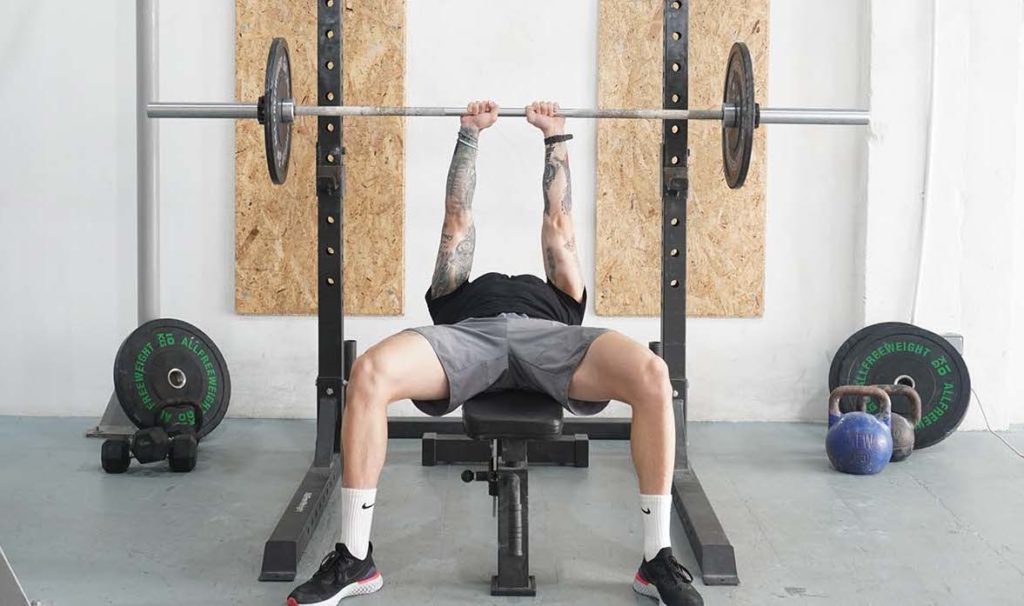
The close-grip barbell bench press is a variation where you bring your hands shoulder-width. Doing so puts your pectorals at a mechanical disadvantage, forcing your triceps to produce more force and press the barbell away from you (1). A narrower grip also lengthens the range of motion because the bar is farther from your torso at the top. We recommend having your hands shoulder-width apart. Anything more narrow could lead to wrist pain.
2. Pause Flat Bench Press
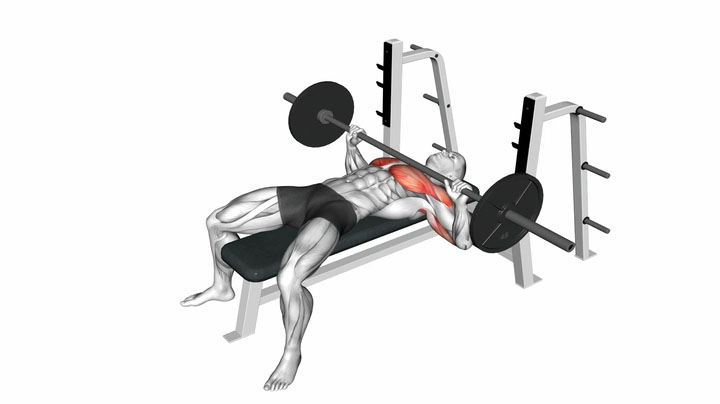
The pause flat bench press is a fantastic variation you can include in your training to improve your strength from the bottom. As you lower the barbell to your chest, hold it there for two to four seconds before pressing it to the top. Doing so prevents you from bouncing the bar off your chest and taking advantage of the stretch reflex. Instead, your pec muscles have to work extra hard to produce the necessary force.
3. Incline Bench Press
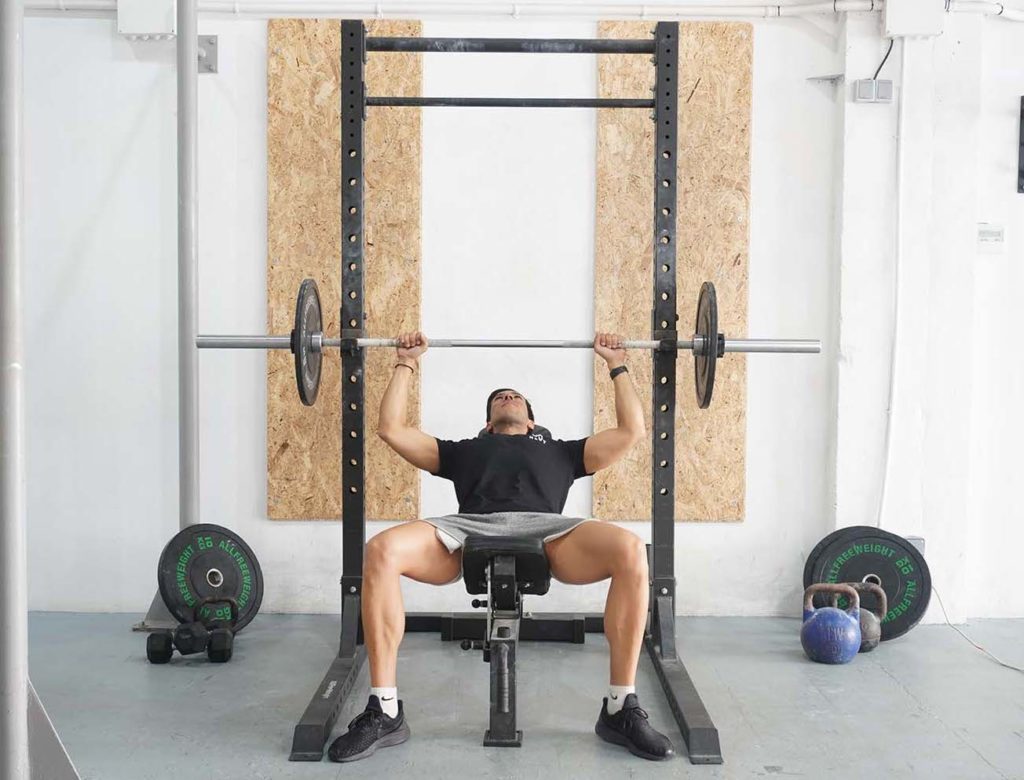
The incline bench press is one of the best bench variations for everyone who wants to emphasize the upper region of the chest muscles and develop their shoulders. Having the bench at an angle of 30 to 45 degrees emphasizes the clavicular head, and using a wider grip allows you to stretch the area better (5). As with the flat bench press, have your hands shoulder-width apart and widen your grip until you find the sweet spot
Mistakes to Avoid
Going too Wide
One of the most common errors with the wide-grip bench press is spreading your hands too far. Trainees are often under the impression that wider is better, but that isn’t necessarily the case. Going too wide can put your shoulder muscles in a weaker position, increasing your risk of an injury. Avoid the error by following our recommendations of starting with your hands shoulder-width apart and gradually widening your grip over several sets until you find your perfect width.
Shortening the Range of Motion too Much
Shortening the range of motion is another common error with the wide-grip bench press, typically resulting from lifting too much weight. Trainees would often lower the barbell only halfway down and stop pressing before they’ve extended their elbows. Avoid the mistake by reducing the weight, touching the barbell to your chest muscles, and locking out your elbows at the top of each rep.
Bouncing the Barbell Off Your Chest
Some trainees don’t shorten the range of motion but hinder their progress by bouncing the barbell off the bottom position. Doing so makes each repetition easier and takes some of the tension away from the chest, shoulders, and triceps. Avoid the error by pausing at the bottom, even for a second.
Similar Exercises to the Wide-Grip Bench Press
Push Up (Weighted)
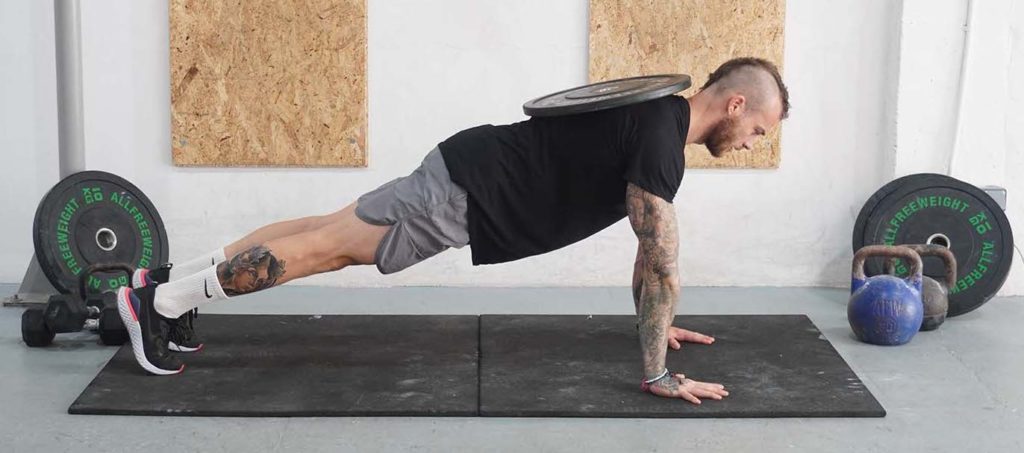
Weighted push ups are a beneficial exercise for developing your pec muscles, shoulders, triceps, serratus anterior, and midsection. Introducing external weight in the form of a weight plate on your back or a weight vest makes the movement even more beneficial for stronger individuals. Doing so allows you to overload your muscles well, causing significant mechanical tension that leads to growth and further strength gain.
Bench Press (Dumbbell)
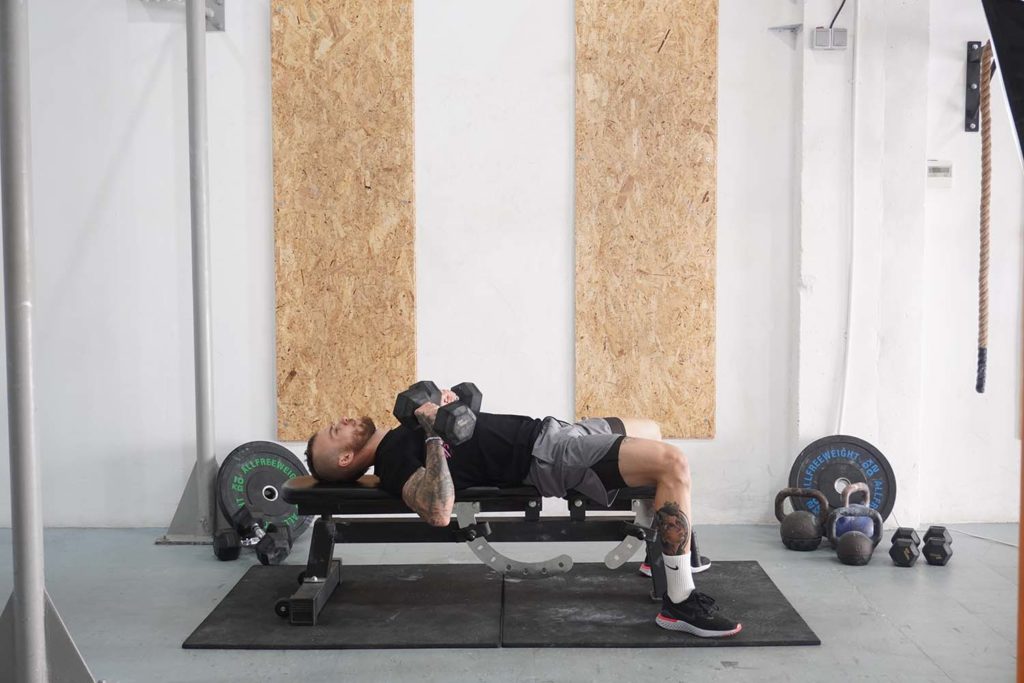
The dumbbell bench press is similar to the barbell version in many ways, but it offers some unique benefits. First, using dumbbells allows you to use a slightly longer range of motion, resulting in a more significant contraction and stretch on each repetition. Second, dumbbells force both sides of your body to work independently, reducing the risk of muscle imbalances. Third, dumbbells require more stability, forcing your midsection to work extra hard, leading to better balance. Plus, similar to the barbell bench press, you can alter the bench angle to emphasize different areas of the pecs.
Chest Press (Machine)
Machine chest presses are a simple and practical accessory movement you can include in any push workout. Using a machine makes it easier to remain balanced and put all of your focus and effort into pressing the load and engaging the involved muscles. You can also do high-repetition and ‘burnout’ sets safely because the risk of technique breakdown is much smaller. Unlike a wide-grip bench press, your hands will be shoulder-width apart.

